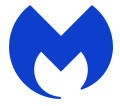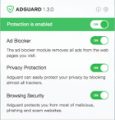What is SearchPrimaryData
According to security specialists, SearchPrimaryData is a malicious application that falls under the category of Adware. Adware is a part of malicious software that displays unwanted ads. The advertisements produced by adware software are sometimes in the form of a sponsored link, pop-up or sometimes in an unclosable window. Adware can seriously affect your privacy, your computer’s performance and security.
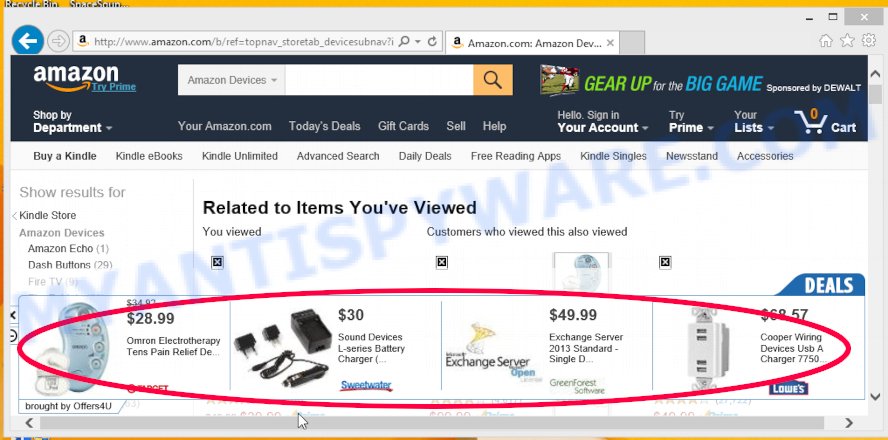
Unwanted ads
Does adware software steal your personal information? Adware has the ability to gather your browsing history and privacy info, including passwords and credit card numbers. In the future, your user info can be sold to third parties.
So, if you happen to encounter the SearchPrimaryData adware, then be quick and take effort to get rid of it sooner. Follow the few simple steps below to remove SearchPrimaryData adware. Let us know how you managed by sending us your comments please.
How does SearchPrimaryData get on your Apple Mac
Usually, adware gets into MAC computers as part of a bundle with free programs, sharing files and other unsafe applications which users downloaded from the World Wide Web. The authors of adware pays software authors for distributing adware within their applications. So, bundled software is often included as part of the installation package. In order to avoid the installation of any adware: select only Manual, Custom or Advanced install method and uncheck all additional programs in which you are unsure.
Threat Summary
| Name | SearchPrimaryData, “SearchPrimaryData 1.0 app” |
| Type | adware, potentially unwanted application (PUA), Mac malware, Mac virus |
| Detection Names | Program:MacOS/Vigram.A, Trojan-Downloader.OSX.Adload, OSX.Trojan.Gen, Adware.MAC.Generic, MacOS.Agent-MT, Adware/Adload!OSX, ApplicUnwnt and Osx.Adware.Cimpli |
| Distribution | Free software installers, fake updaters, torrent downloads and suspicious pop up ads |
| Symptoms | You keep getting redirected to questionable web-sites, you experience a large amount of of unexpected pop up windows, your MAC system starts automatically installing unwanted software, unexpected web-browser extensions or toolbars keep coming back, unexpected changes in your internet browser like displaying new tabs you didn’t open, slow browsing Internet. |
| Removal | SearchPrimaryData removal guide |
How to Remove SearchPrimaryData adware (removal guide)
When the adware gets installed on your computer without your knowledge, it’s not easy to delete. Most commonly, there is no Uninstall application which simply delete the adware from your Apple Mac. So, we suggest using well-proven free specialized tool like MalwareBytes. But the best method to remove SearchPrimaryData will be to perform several manual steps, after that additionally run antimalware tools.
To remove SearchPrimaryData, complete the following steps:
- Remove profiles created by SearchPrimaryData
- Delete SearchPrimaryData associated software by using the Finder
- Remove SearchPrimaryData related files and folders
- Scan your Mac with MalwareBytes
- Remove SearchPrimaryData from Safari, Chrome, Firefox
- How to stay safe online
Remove profiles created by SearchPrimaryData
SearchPrimaryData can make changes to the Mac system such as malicious changes to browser settings, and the addition of malicious system profiles. You need to check the system preferences, find and remove malicious profiles and ensure your settings are as you expect.
Click Apple menu ( ![]() ) > System Preferences.
) > System Preferences.
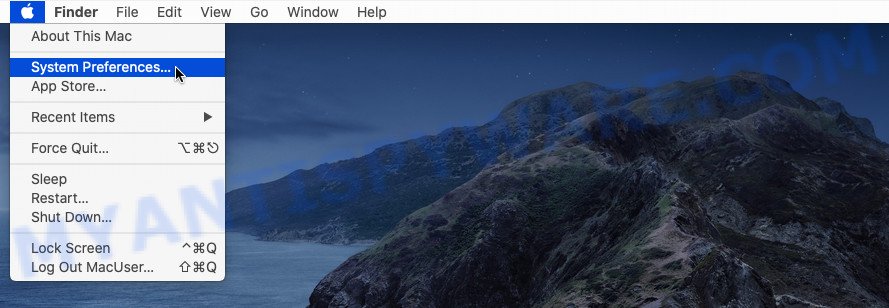
In System Preferences, select Profiles. if there is no Profiles in the list of preferences, that means there are no profiles installed on the Mac. If there is Profiles in the list, then click on it, then select a profile related to SearchPrimaryData.
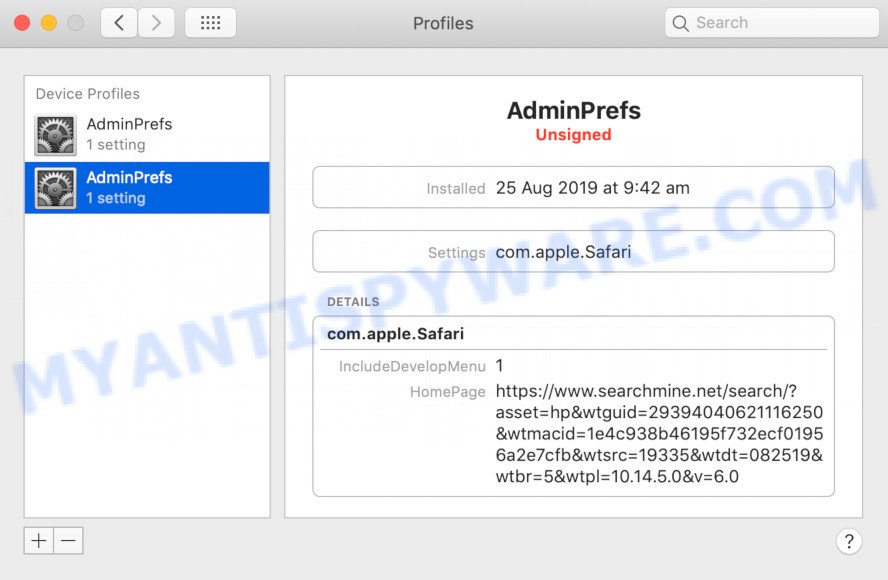
To delete a malicious profile, click on the minus button ( – ) located at the bottom-left of the Profiles screen.
Delete SearchPrimaryData associated software by using the Finder
The next step in uninstalling browser hijackers, PUPs and adware by yourself is to go into the Finder, then Applications. Take a look at the list of applications on your Mac device and see if there are any questionable and unknown apps. If you see any, you need to uninstall it. Of course, before doing so, you can do an Web search to find details on the program. If it is a adware, potentially unwanted program and browser hijacker, you will likely find information that says so.
Open Finder and click “Applications”.
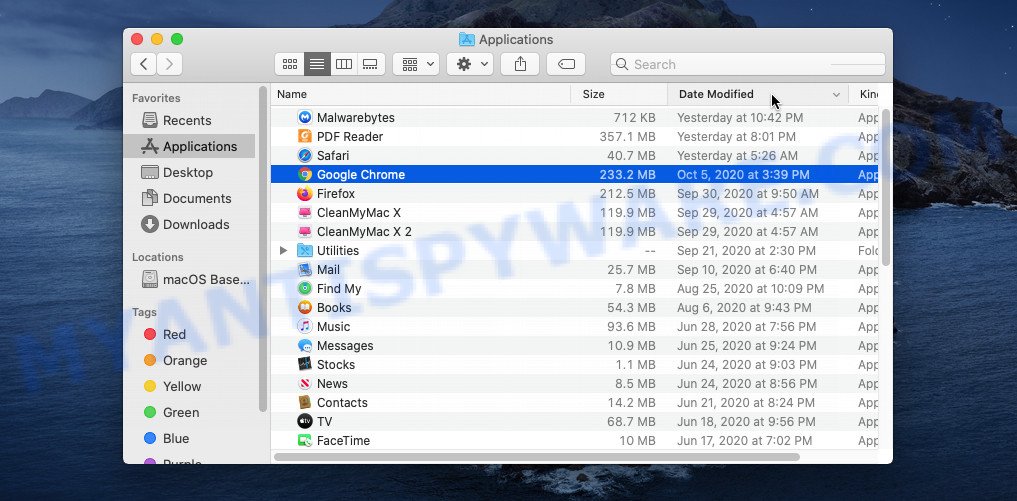
Very carefully look around the entire list of software installed on your MAC. Most likely, one of them is the SearchPrimaryData adware software. Once you have found a questionable, unwanted or unused program, right click to it and choose “Move to Trash”. Another method is drag the program from the Applications folder to the Trash.
Don’t forget, choose Finder -> “Empty Trash”.
Remove SearchPrimaryData related files and folders
Now you need to try to find SearchPrimaryData related files and folders, and then delete them manually. You need to look for these files in certain directories. To quickly open them, we recommend using the “Go to Folder…” command.
SearchPrimaryData creates several files, these files must be found and removed. Below is a list of files associated with this unwanted program.
- /Library/LaunchDaemons/com.SearchPrimaryData.system.plist
- ~/Library/LaunchAgents/com.SearchPrimaryData.service.plist
- /Library/Application Support/.(RANDOM)/System/com.SearchPrimaryData.system
- ~/Library/Application Support/.(RANDOM)/Services/com.SearchPrimaryData.service.app
Some files created by SearchPrimaryData are hidden from the user. To find and delete them, you need to enable “show hidden files”. To do this, use the shortcut CMD + SHIFT + . Press once to show hidden files and again to hide them. There is another way. Click Finder -> Applications -> Utilities -> Terminal. In Terminal, paste the following text: defaults write com.apple.finder AppleShowAllFiles YES

Press Enter. Hold the ‘Option/alt’ key, then right click on the Finder icon in the dock and click Relaunch.
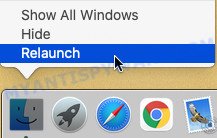
Click on the Finder icon. From the menu bar, select Go and click “Go to Folder…”. As a result, a small window opens that allows you to quickly open a specific directory.

Check for SearchPrimaryData generated files in the /Library/LaunchAgents folder

In the “Go to Folder…” window, type the following text and press Go:
/Library/LaunchAgents
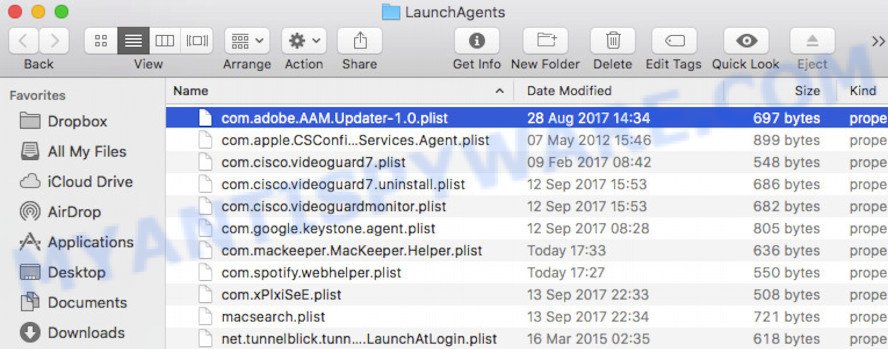
This will open the contents of the “/Library/LaunchAgents” folder. Look carefully at it and pay special attention to recently created files, as well as files that have a suspicious name. Move all suspicious files to the Trash. A few examples of files: com.SearchPrimaryData.service.plist, com.net-preferences.plist, search.plist, macsearch.plist, com.google.defaultsearch.plist, , installapp.plist and com.machelper.plist. Most often, potentially unwanted programs, adware software and browser hijackers create several files with similar names.
Check for SearchPrimaryData generated files in the /Library/Application Support folder

In the “Go to Folder…” window, type the following text and press Go:
/Library/Application Support
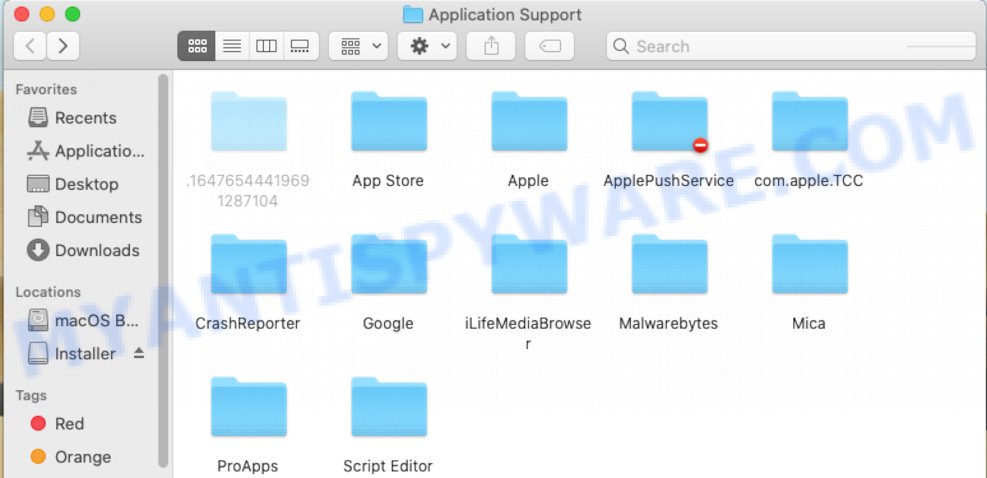
This will open the contents of the “Application Support” folder. Look carefully at its contents, pay special attention to recently added/changed folders and files. Check the contents of suspicious folders, if there is a file with a name similar to com.SearchPrimaryData.system, then this folder must be deleted. Move all suspicious folders and files to the Trash.
Check for SearchPrimaryData generated files in the “~/Library/LaunchAgents” folder

In the “Go to Folder…” window, type the following text and press Go:
~/Library/LaunchAgents

Proceed in the same way as with the “/Library/LaunchAgents” and “/Library/Application Support” folders. Look for suspicious and recently added files. Move all suspicious files to the Trash.
Check for SearchPrimaryData generated files in the /Library/LaunchDaemons folder
In the “Go to Folder…” window, type the following text and press Go:
/Library/LaunchDaemons

Carefully browse the entire list of files and pay special attention to recently created files, as well as files that have a suspicious name. Move all suspicious files to the Trash. A few examples of files to be deleted: com.macsearch.system.plist, com.search.system.plist, com.machelper.system.plist, com.installapp.system.plist and com.SearchPrimaryData.system.plist. In most cases, adware software, potentially unwanted programs and browser hijackers create several files with similar names.
Scan your Mac with MalwareBytes
If you’re still having problems with the SearchPrimaryData removal or just wish to scan your Mac device occasionally for adware software and other malware, then download MalwareBytes AntiMalware (MBAM). It is free for home use, and detects and deletes various undesired programs that attacks your MAC OS or degrades computer performance. MalwareBytes Anti-Malware (MBAM) can remove toolbars, browser hijackers, PUPs and adware as well as malicious software, including ransomware and trojans.
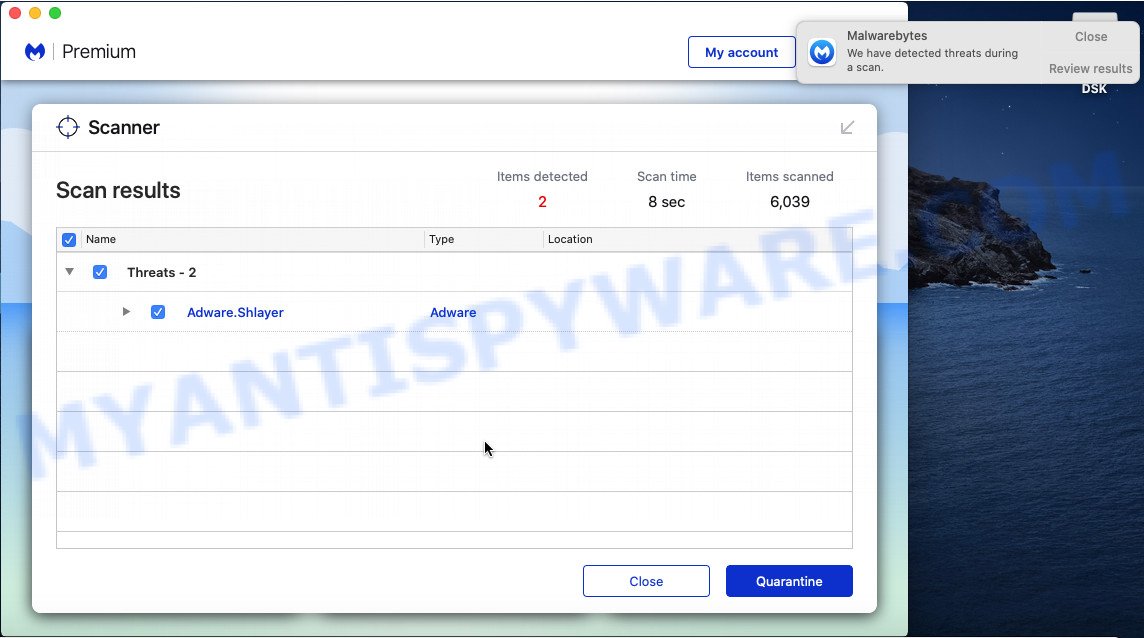
- Installing the MalwareBytes Anti-Malware is simple. First you will need to download MalwareBytes Anti-Malware (MBAM) by clicking on the following link.
Malwarebytes Anti-malware (Mac)
21017 downloads
Author: Malwarebytes
Category: Security tools
Update: September 10, 2020
- When the download is done, please close all programs and open windows on your computer. Run the downloaded file. Follow the prompts.
- The MalwareBytes will start and display the main window.
- Further, press the “Scan” button for checking your MAC for the SearchPrimaryData adware. A scan can take anywhere from 10 to 30 minutes, depending on the number of files on your MAC system and the speed of your MAC system. While the tool is checking, you may see how many objects and files has already scanned.
- When the system scan is complete, MalwareBytes will display you the results.
- When you are ready, press the “Remove Selected Items” button.
- Close the Anti Malware and continue with the next step.
Remove SearchPrimaryData from Safari, Chrome, Firefox
This step will show you how to delete harmful addons. This can delete SearchPrimaryData adware and fix some browsing issues, especially after adware infection.
You can also try to remove SearchPrimaryData adware by reset Chrome settings. |
If you are still experiencing issues with SearchPrimaryData adware removal, you need to reset Firefox browser. |
|
How to stay safe online
Running an ad blocker program such as AdGuard is an effective way to alleviate the risks. Additionally, ad-blocker applications will also protect you from malicious advertisements and websites, and, of course, stop redirection chain to misleading, scam and similar web-pages.
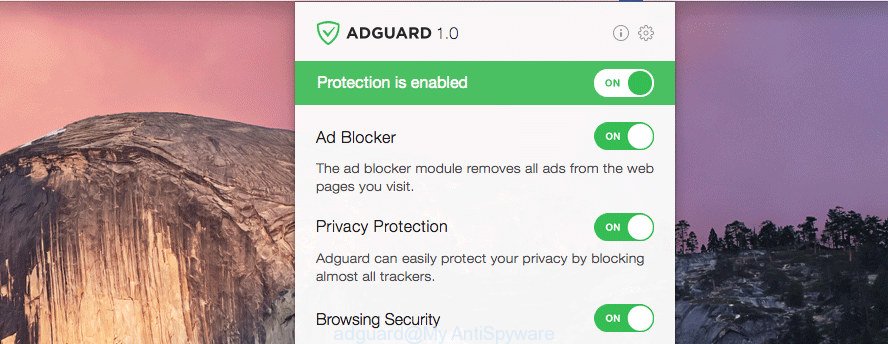
AdGuard can be downloaded from the following link.
3779 downloads
Author: © Adguard
Category: Security tools
Update: January 17, 2018
After the download is finished, start the downloaded file. You will see the “Setup Wizard” screen. Follow the prompts.
Each time, when you launch your machine, AdGuard will run automatically and stop annoying pop-ups, block harmful and misleading websites.
To sum up
Once you’ve finished the few simple steps above, your MAC OS should be clean from this adware and other malware. The Chrome, Safari and Firefox will no longer display any unwanted ads when you browse the World Wide Web. Unfortunately, if the steps does not help you, then you have caught a new adware, and then the best way – ask for help.
Please create a new question by using the “Ask Question” button in the Questions and Answers. Try to give us some details about your problems, so we can try to help you more accurately. Wait for one of our trained “Security Team” or Site Administrator to provide you with knowledgeable assistance tailored to your problem with the SearchPrimaryData adware.
